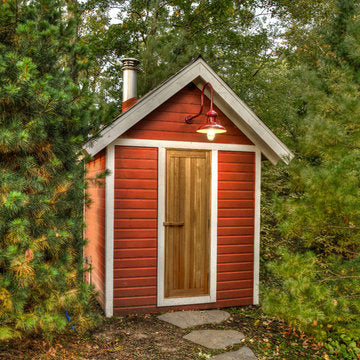Is It Cheaper to Build or Buy a Shed?

When deciding whether to build or buy a shed, there are numerous factors to consider. From the initial costs and time investment to the long-term benefits and customization options, your decision will depend on various personal preferences and financial calculations. Here’s a comprehensive look at the pros and cons from different perspectives and categories.
Cost Analysis
Upfront Costs:
Building a Shed: Initial costs can vary significantly depending on the materials and design complexity. Basic materials like treated lumber, nails, screws, and roofing can be more economical, but premium materials such as cedar or composite can raise the price. Don’t forget to factor in tools you might need to purchase or rent.
Buying a Shed: Prefabricated sheds generally come with a fixed price, which can be attractive for those who have a strict budget. However, higher-end pre-built sheds can be surprisingly expensive. Prices can range from a few hundred dollars for small vinyl or metal sheds to several thousand for large wooden or modern design options.

Installation Costs:
Building: If you have construction experience, you might save money by doing it yourself. However, if you need to hire help, labor costs can add up quickly.
Buying: Many shed manufacturers offer delivery and installation services either included in the price or for an additional fee. This convenience can sometimes justify the higher initial cost.
Long-term Costs:
Building: Custom builds might have better longevity if high-quality materials are chosen. However, ongoing maintenance like repainting or re-roofing must be considered.
Buying: Prefabricated sheds often come with warranties that cover certain repairs, reducing the long-term maintenance expenses.

Customization and Design
Building:
Customization: When you build your own shed, you can tailor every aspect to meet your specific needs. Whether it’s a particular size, a unique shape, or specific shelving, the possibilities are endless.
Personal Satisfaction: Many people enjoy the process of creating something with their own hands. The personal satisfaction and pride in craftsmanship can be invaluable.
Buying:
Variety: There is a vast array of shed designs available on the market. From utilitarian metal sheds to elegant wooden garden sheds and modern, minimalist designs, there's something for everyone's taste.
Convenience: Buying a shed is a straightforward process. Choose the model that fits your needs and aesthetics, and you’re set. This simplicity is a significant advantage for those lacking the time or skills to build.

Time Investment
Building:
Time-Consuming: Building a shed can be a lengthy process, especially for those with limited DIY experience. Depending on the complexity, it can take days, weeks, or even months to complete.
Learning Curve: There may be a steep learning curve involved, including understanding construction techniques, obtaining permits if required, and ensuring the shed meets local building codes.
Buying:
Quick Setup: Purchasing a prefabricated shed usually means you can have it set up and ready to use within a day or two. This is ideal for those who need storage solutions immediately.
No Hassle: There’s no need to worry about construction details. Professional installation services often handle everything from site preparation to assembly.
Long-term Durability and Value
Building:
Durability: With careful selection of materials and proper assembly, a custom-built shed can be incredibly sturdy and long-lasting.
Equity Addition: A well-built shed can increase your property value, especially if it’s a larger structure that complements the home’s design.
Buying:
Quality Control: Prefabricated sheds are built in controlled environments, ensuring consistency in quality. Many manufacturers also offer durable materials resistant to rot, insects, and adverse weather conditions.
Resale Value: A high-quality, aesthetically pleasing shed can potentially increase the resale value of your home, making it an investment rather than a mere expense.

Key Considerations
Purpose and Size:
Think about what you’re using the shed for. A small garden tool shed costs significantly less than a large workshop or she shed.
Local Regulations:
Check local zoning laws and building codes. Some areas have restrictions on the size and type of structures you can add to your property.
Climate and Environment:
Consider the climate in your region. Materials that withstand your local weather conditions are a must for ensuring longevity.

Conclusion
Ultimately, the decision to build or buy a shed hinges on balancing cost, time, customization desires, and long-term benefits. If you have the skills, time, and desire for a highly specific shed, building might be the way to go. However, if you need something quickly with minimal hassle, purchasing a prefabricated shed offers convenience and reliability. In either case, carefully considering your specific needs, budget, and available resources will lead you to the best decision for your situation.
